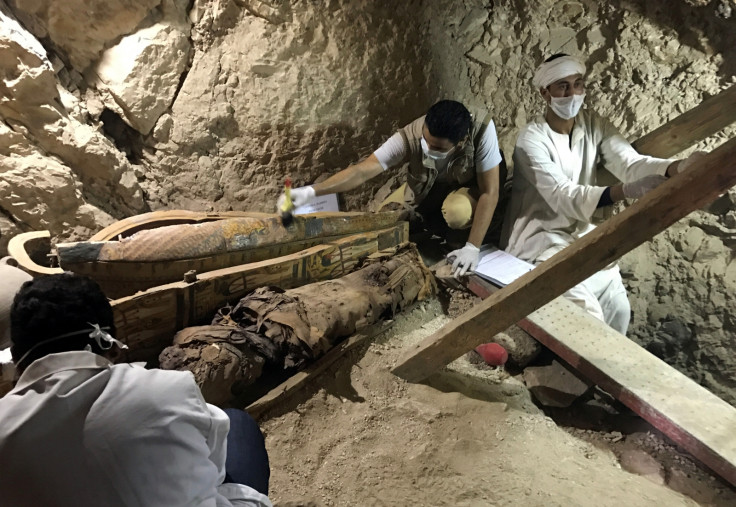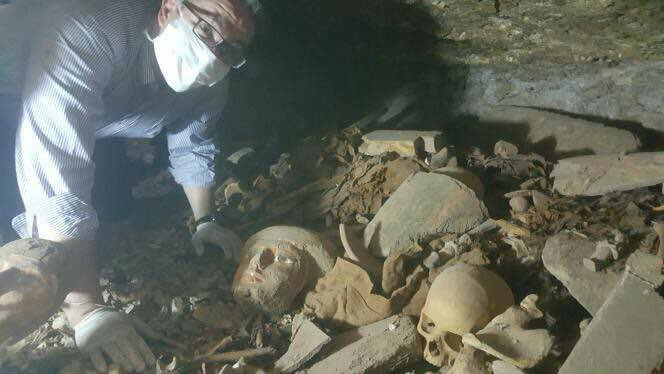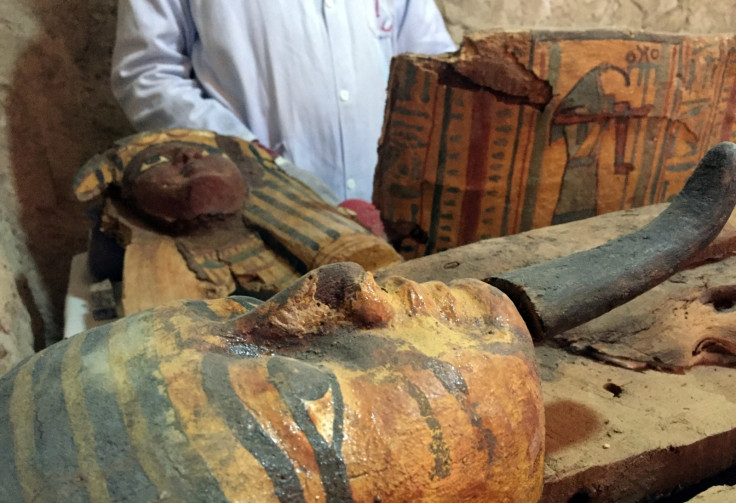Incredible pictures from 3,500-year-old tomb full of mummies discovered in Luxor
It is thought to be the tomb of a nobleman called Userhat, a city judge who lived sometime between 1,500 BC to 1,000 BC.
On Luxor's west bank, an Egyptian archaeological mission working at Draa Abul Nagaa necropolis has unearthed the funerary collection of a New Kingdom tomb built for a nobleman called Userhat. He is thought to have been a city judge sometime between 1,500 BC to 1,000 BC.
Egypt's Ministry of Antiquities has announced the discovery, saying that the tomb was characteristic of the tombs of noblemen from that period - T-shaped with an open court leading into a rectangular hall, a corridor and an inner chamber.
The archaeologists worked hard to remove more than 450 metres of debris to create a passage to the entrance of the tomb. The entrances to two joint tombs was also identified and both will now be excavated.
Among the important discoveries made by the archaeologists in Userhat's tomb was a beautiful and well-preserved wooden coffin decorated with colourful scenes of Ancient Egyptian life. Inside a nine-metre shaft, the team also found small figurines representing kings from different dynasties, wooden masks and the handle lid of a sarcophagus.
The archaeologists then walked down the corridor of the tomb, stumbling upon an inner chamber where human remains and a collection of sarcophagi from the 21st Dynasty was found, containing mummies wrapped in linen.


A collection of funerary figurines carved in faience, terracotta and wood (and known as ushabti figurines) was also unearthed alongside a collection of clay pots of different shapes and sizes. In total, more than 1,000 ushabti were found in the whole tomb. According to Egyptologists, they were thought to be buried with the deceased so that they could work for them in the afterlife.
Although this tomb was built during the New Kingdom of Egypt (1550–1070 BC), there are indications that it was later re-opened, and that more people were buried in it.
Read more about the discovery: Ancient Egyptian mummies and statues more than 3,500 years old unearthed in Luxor


© Copyright IBTimes 2025. All rights reserved.






















